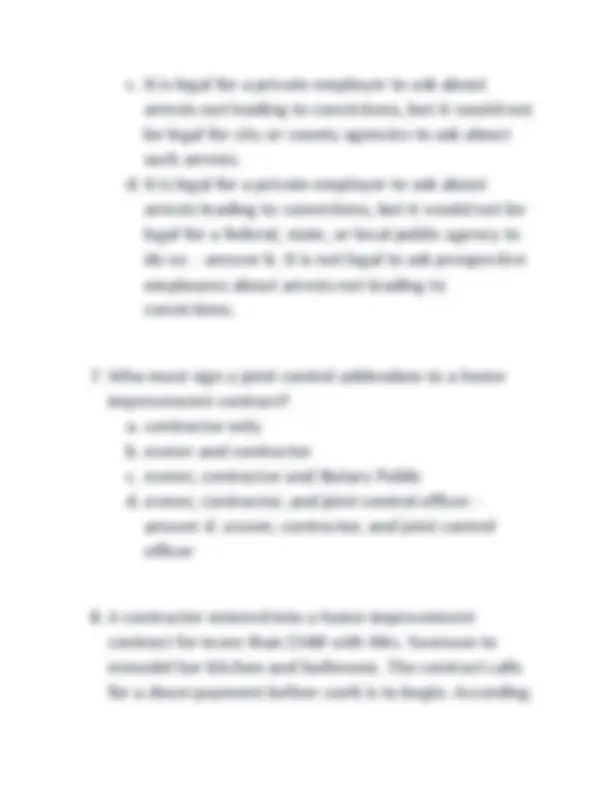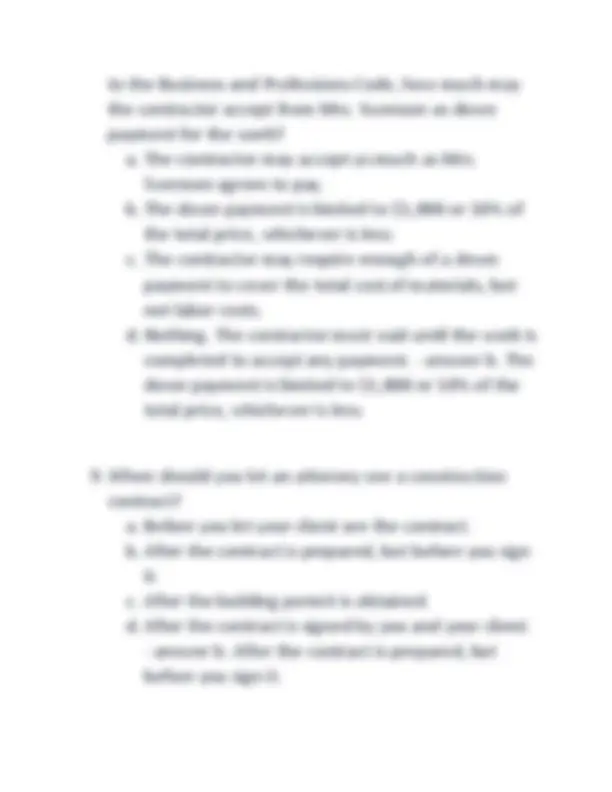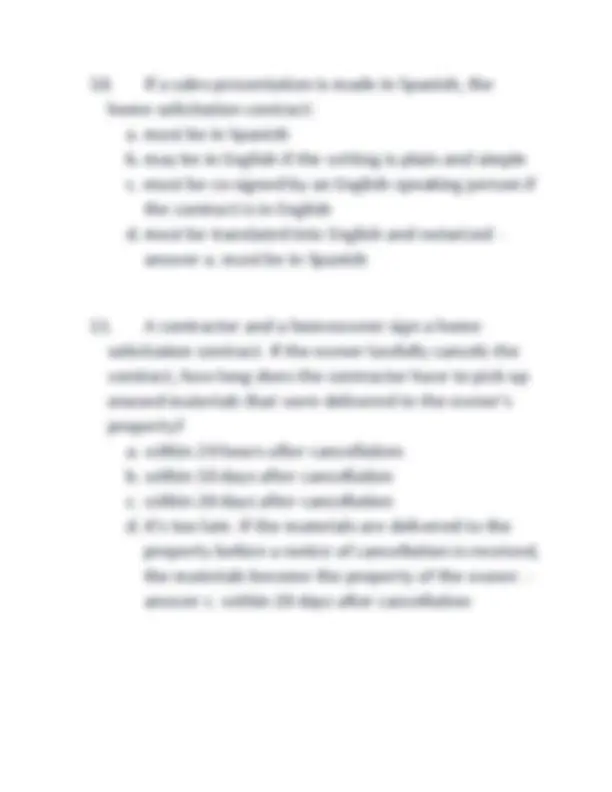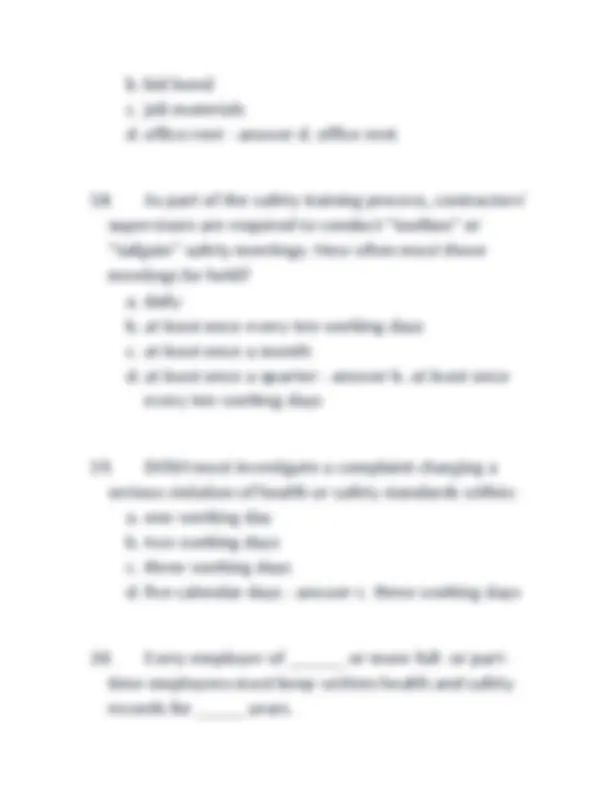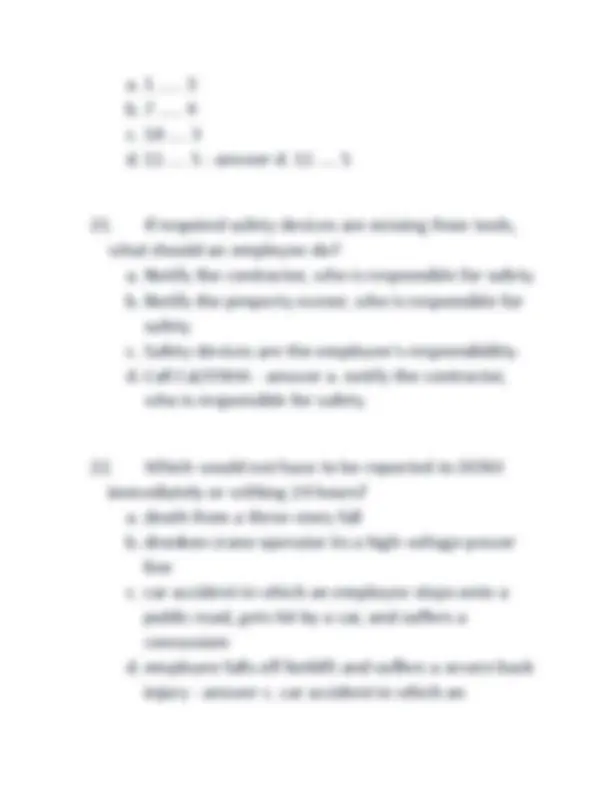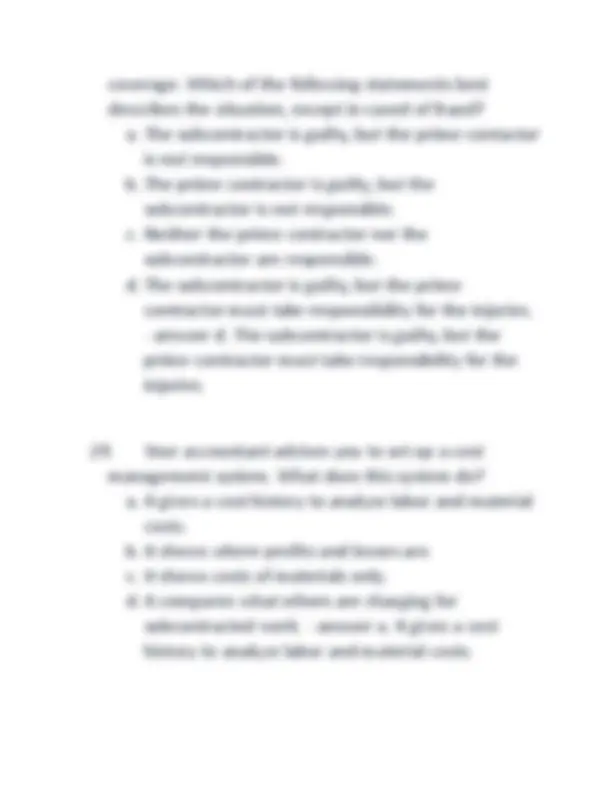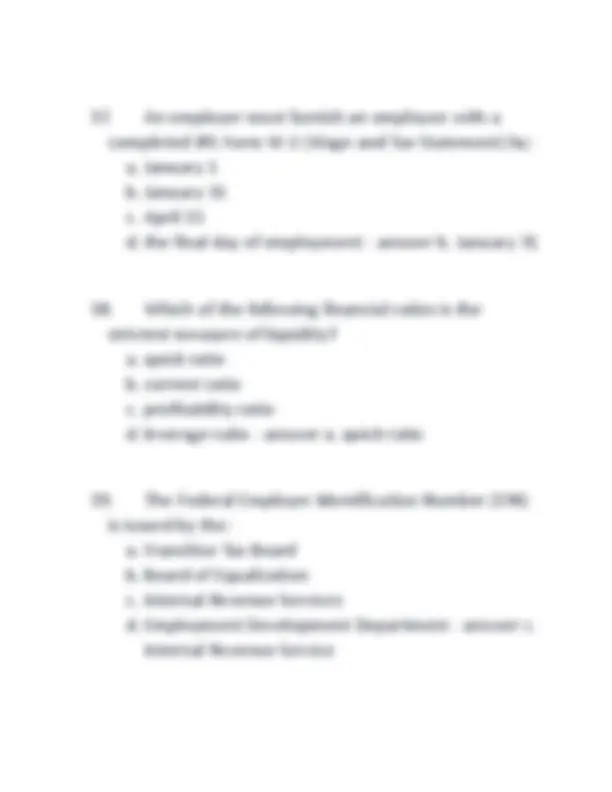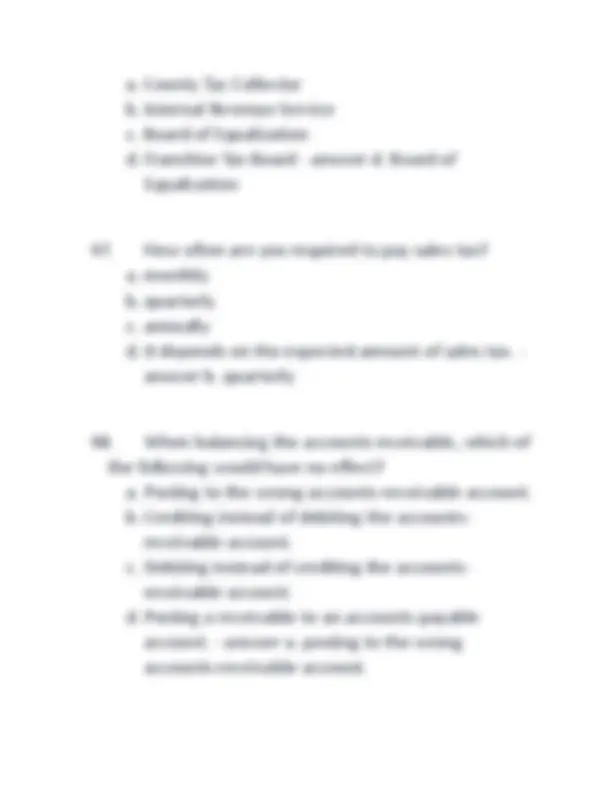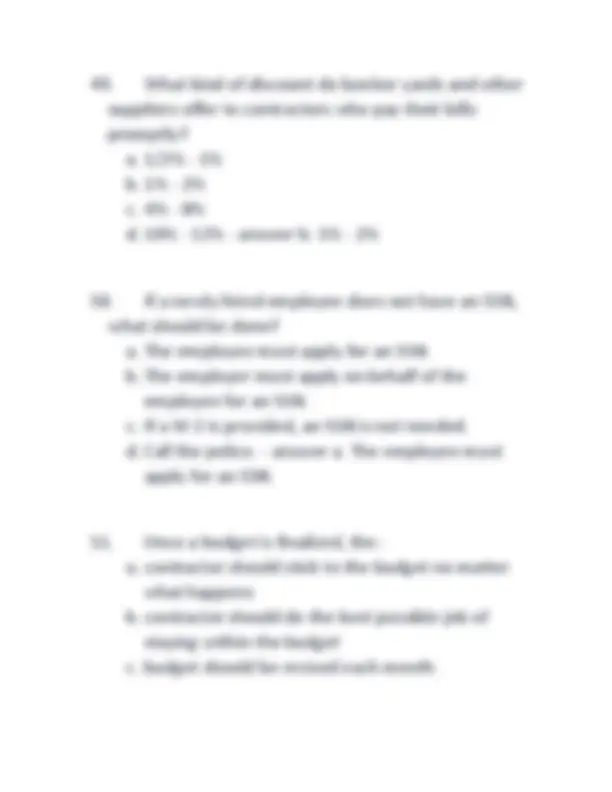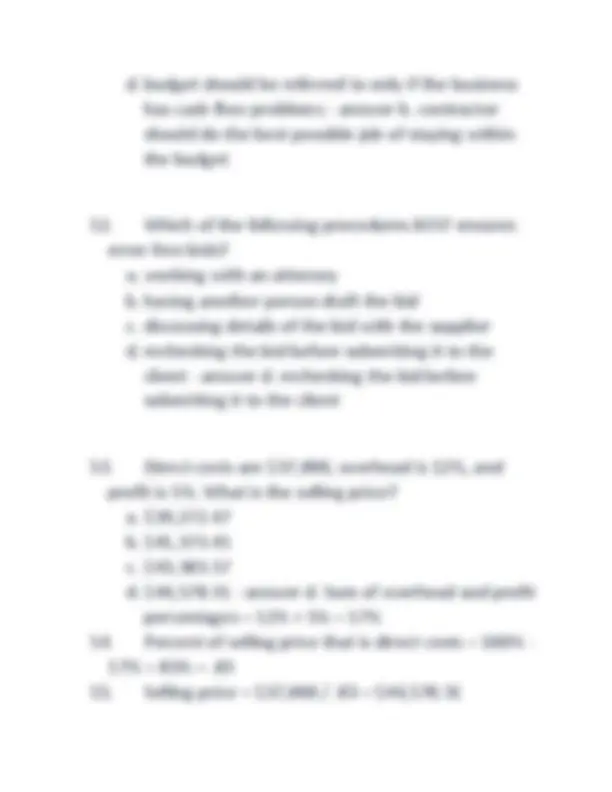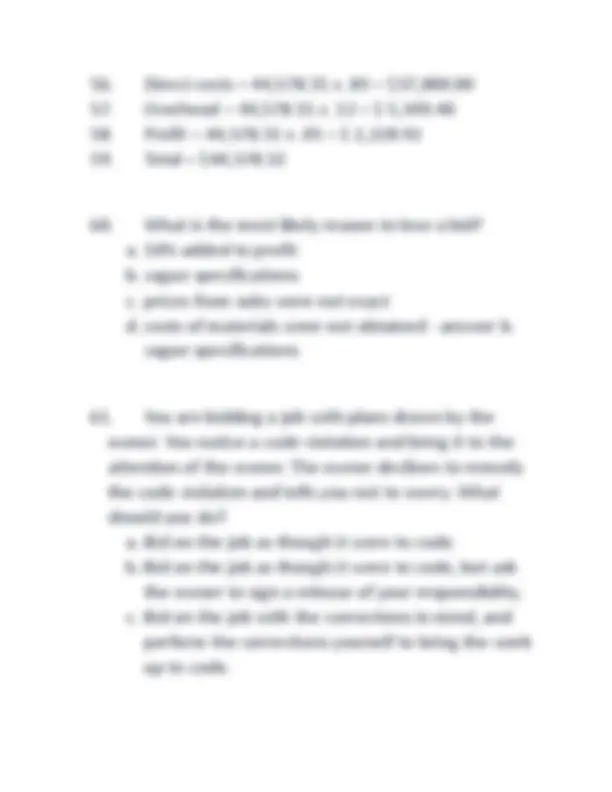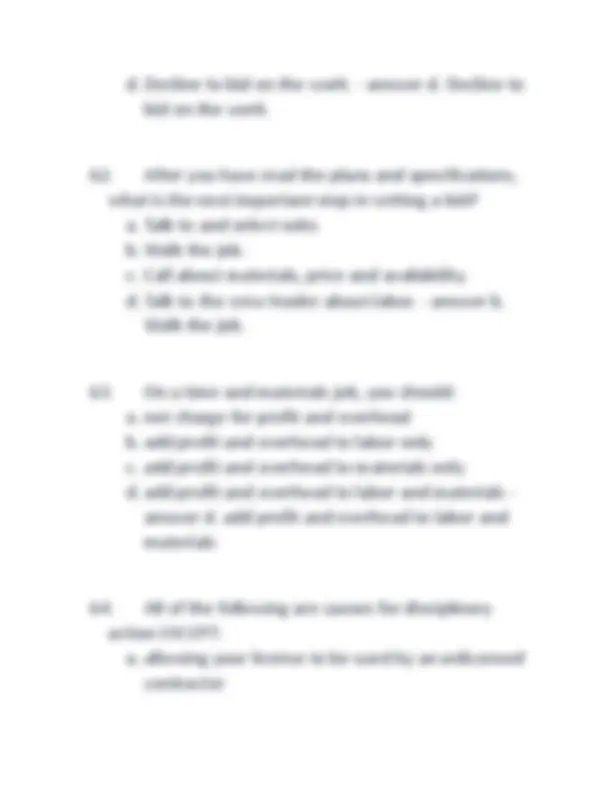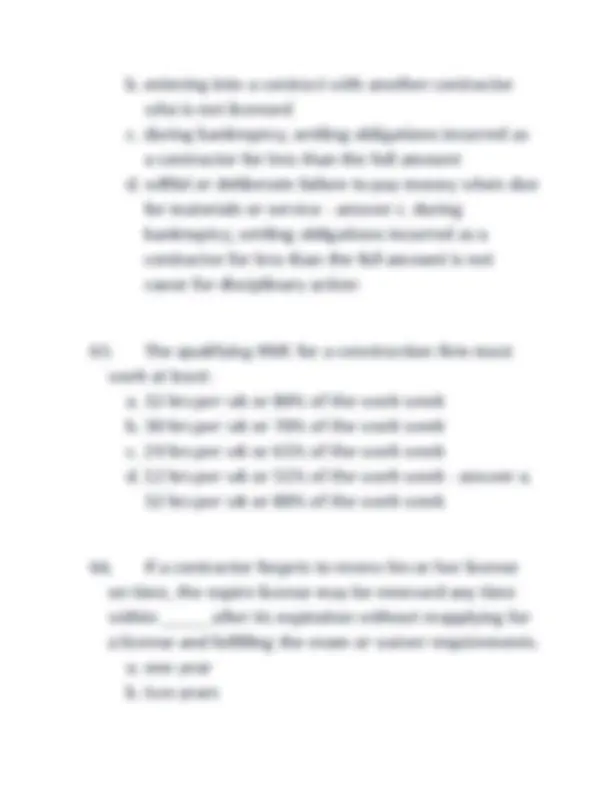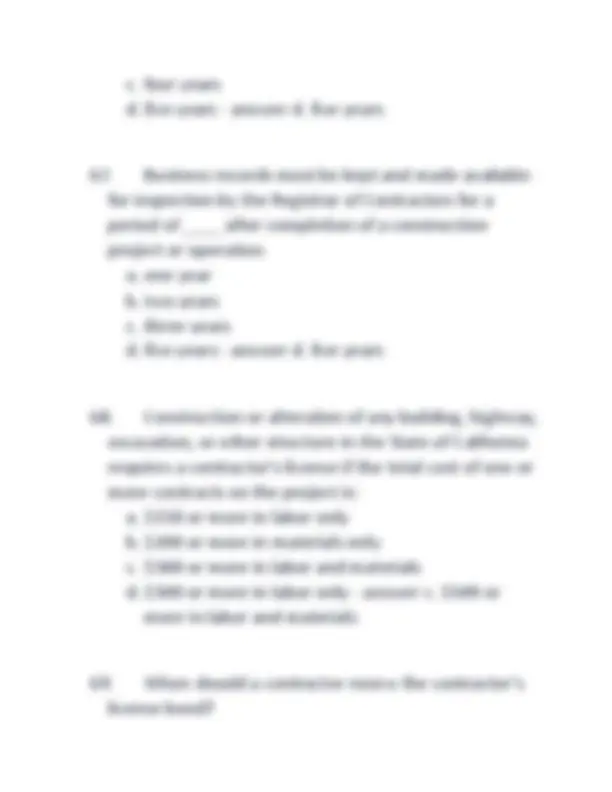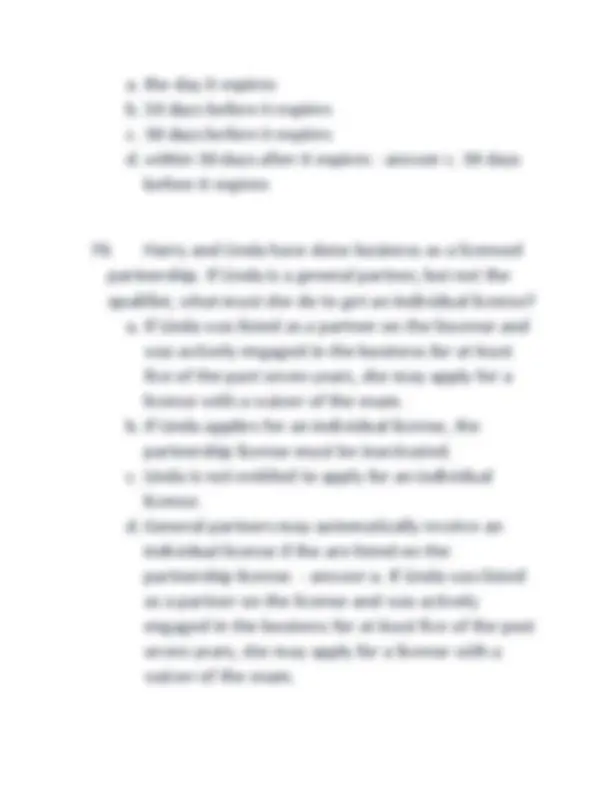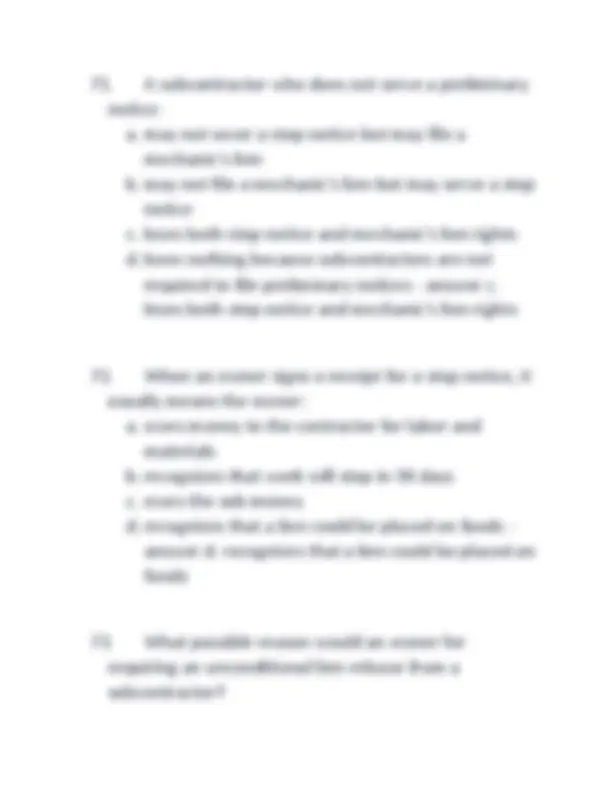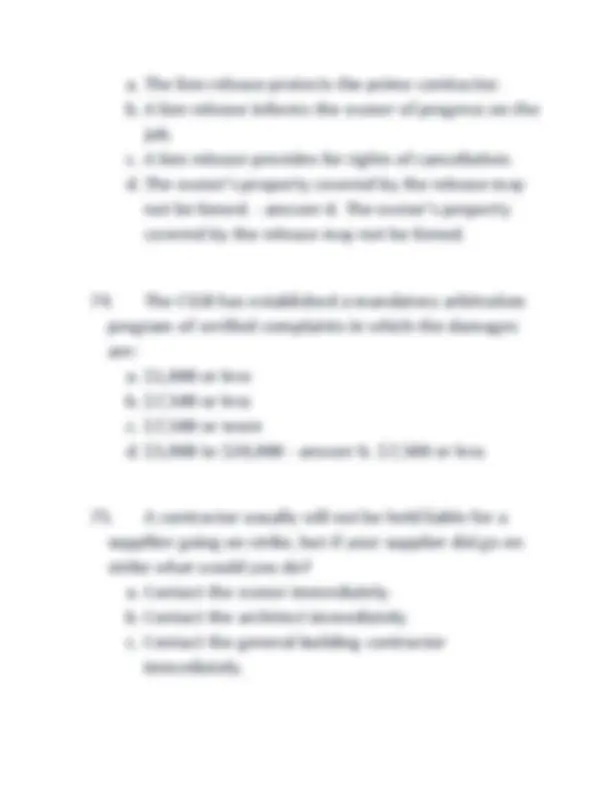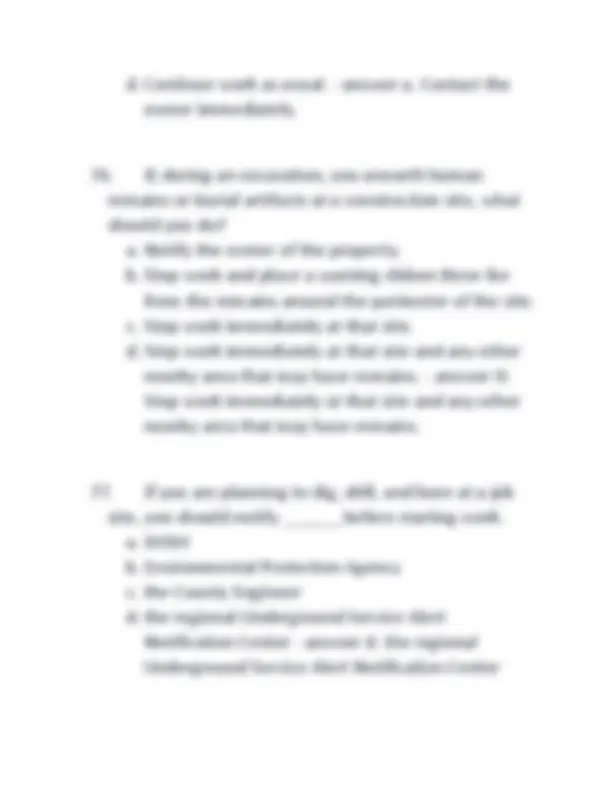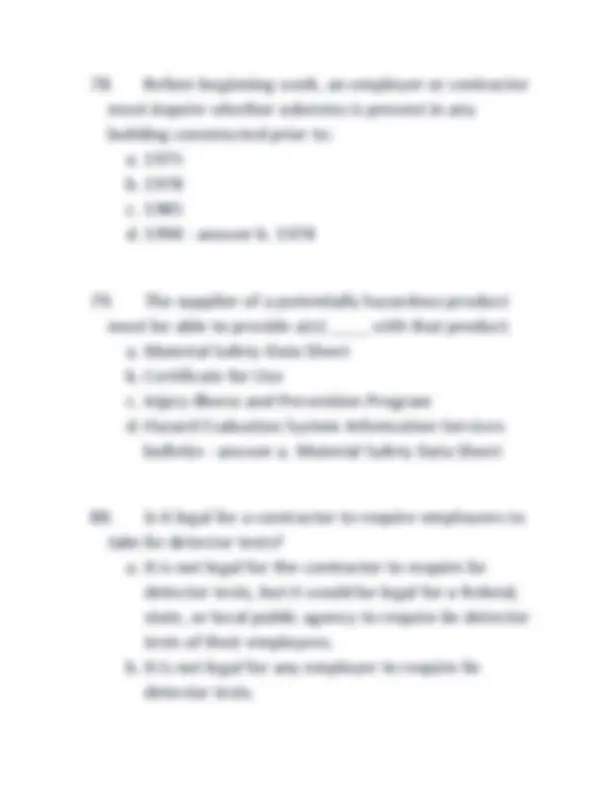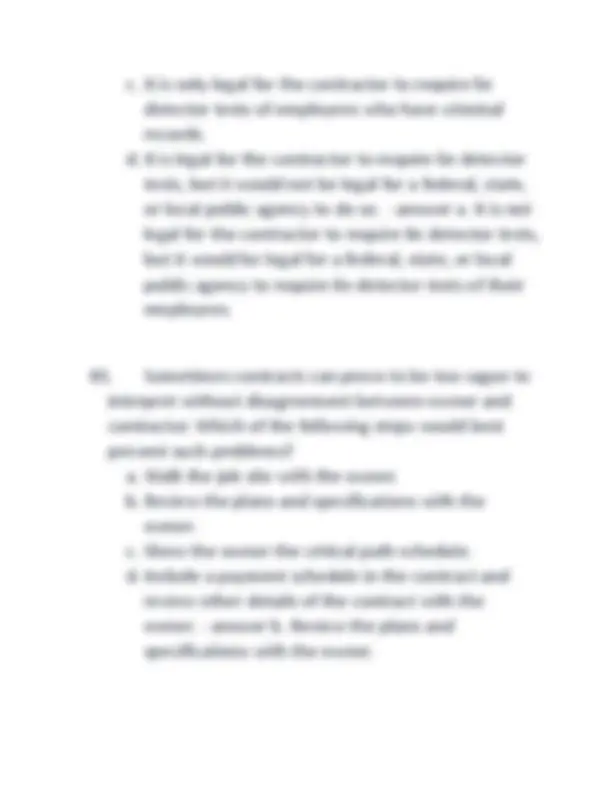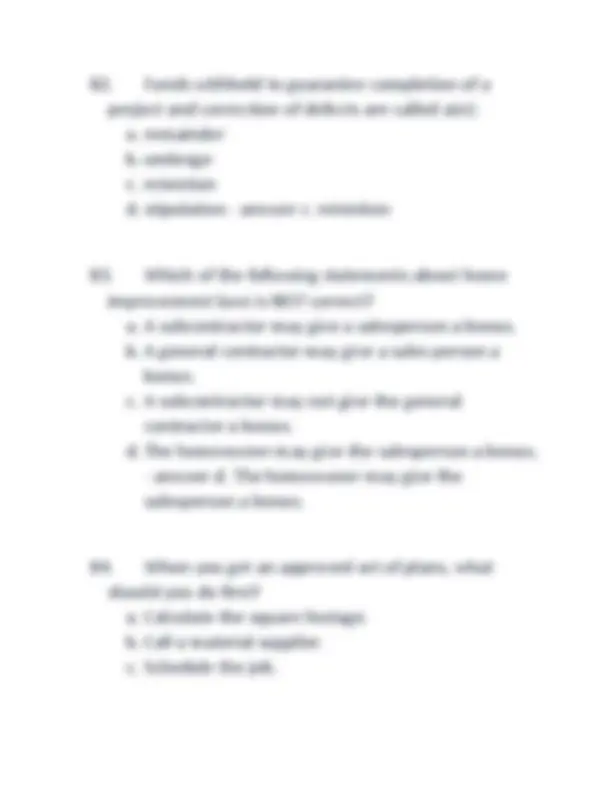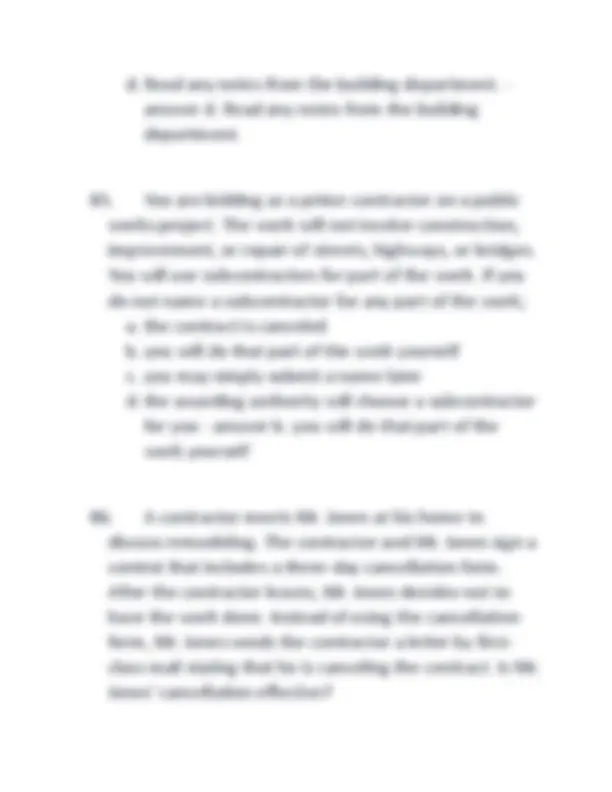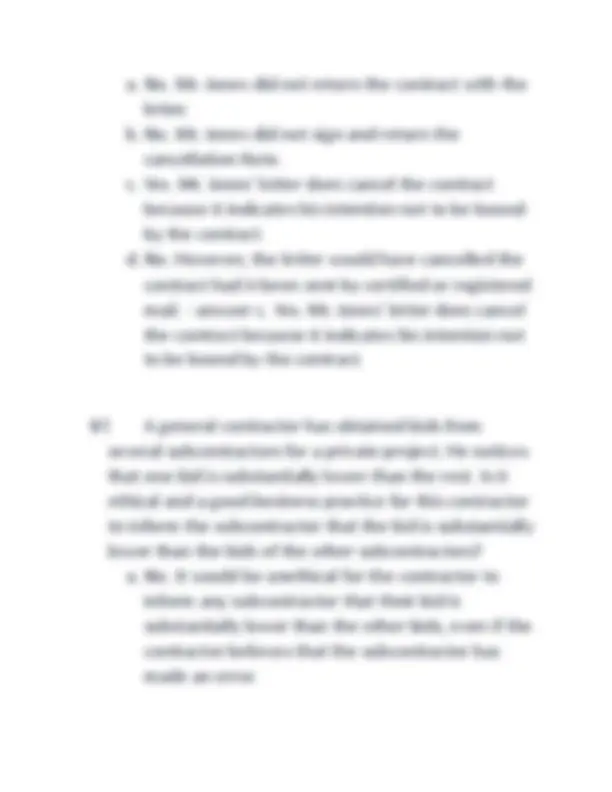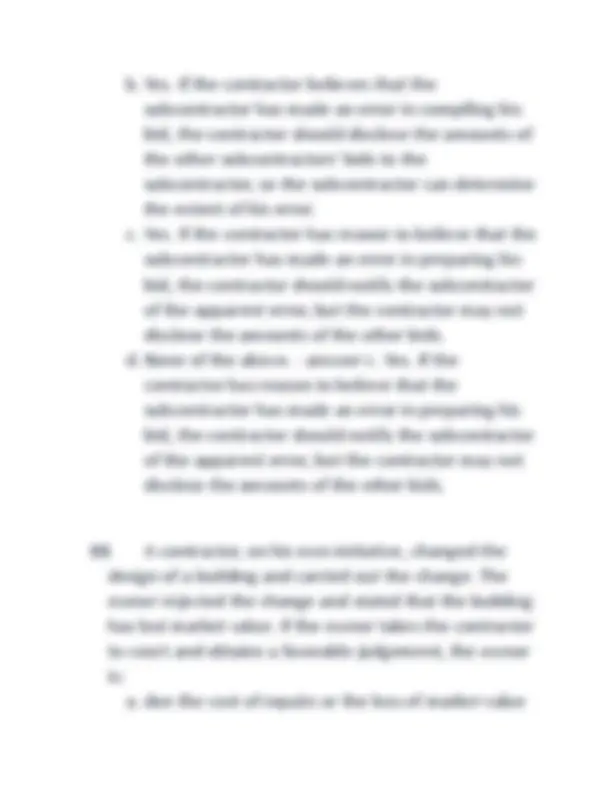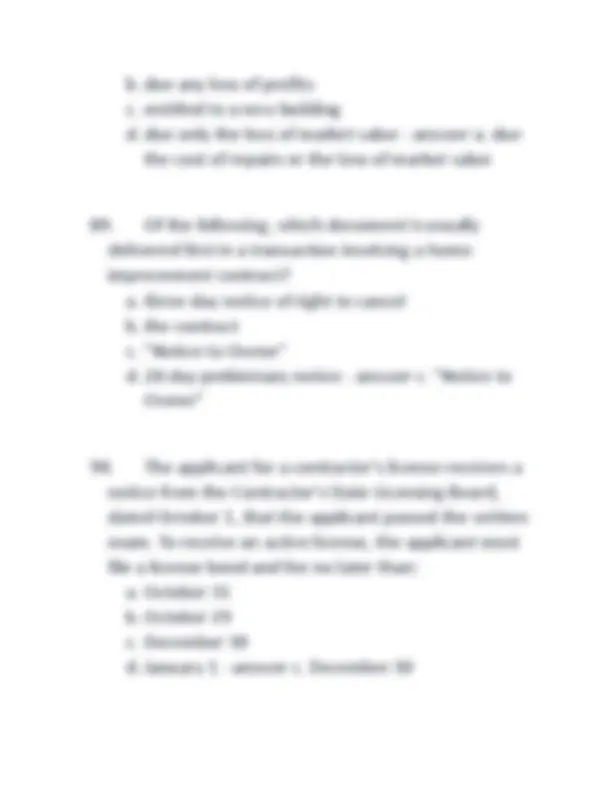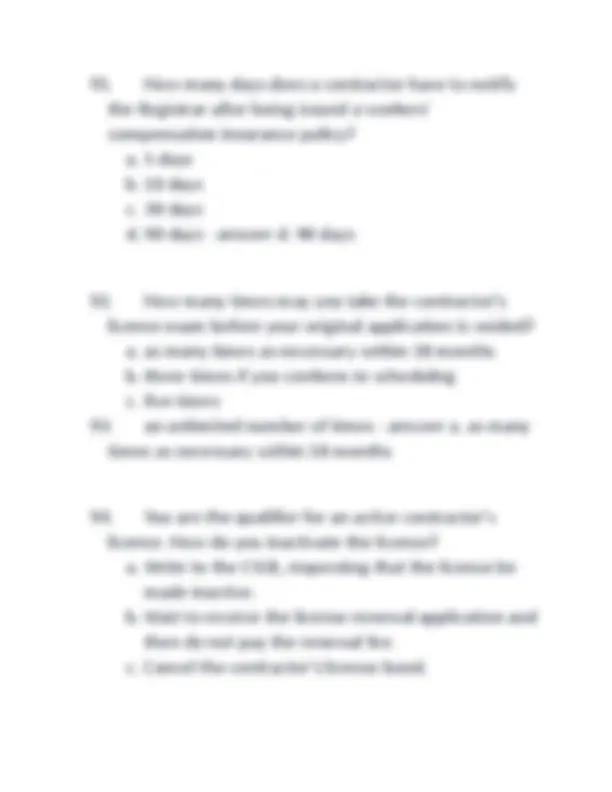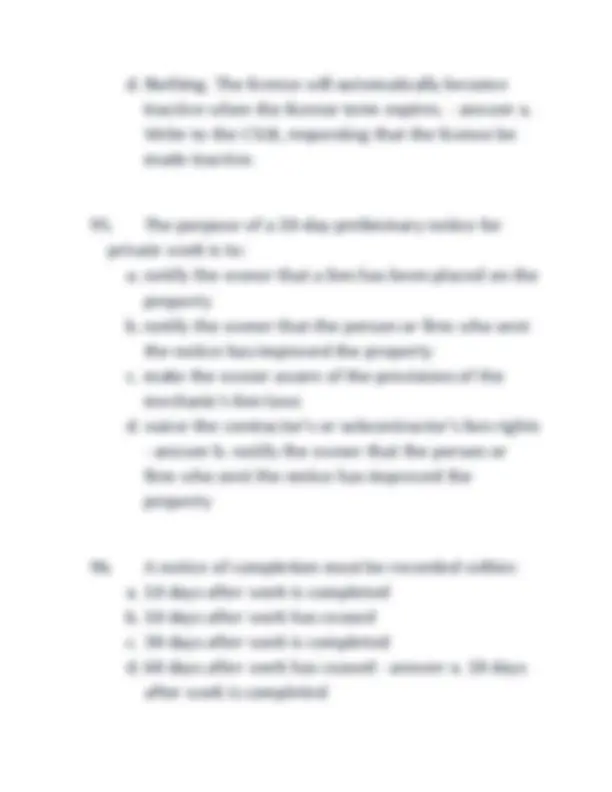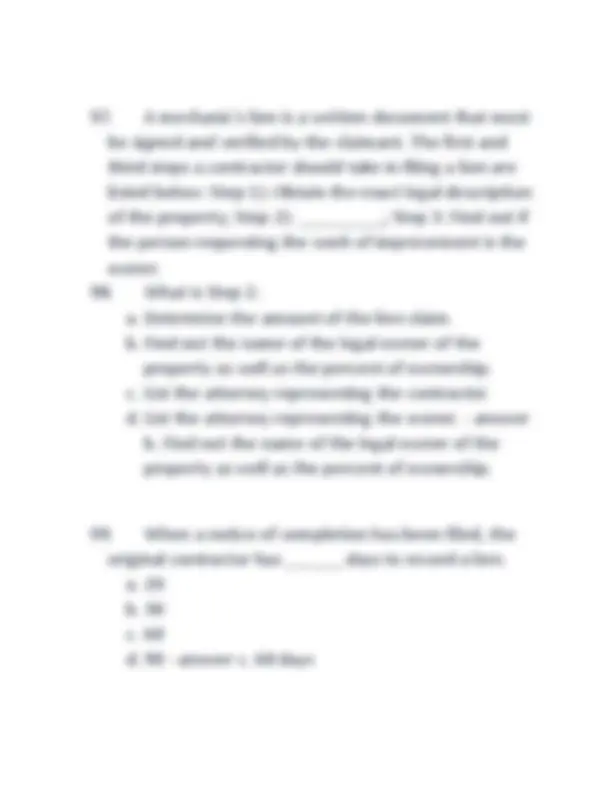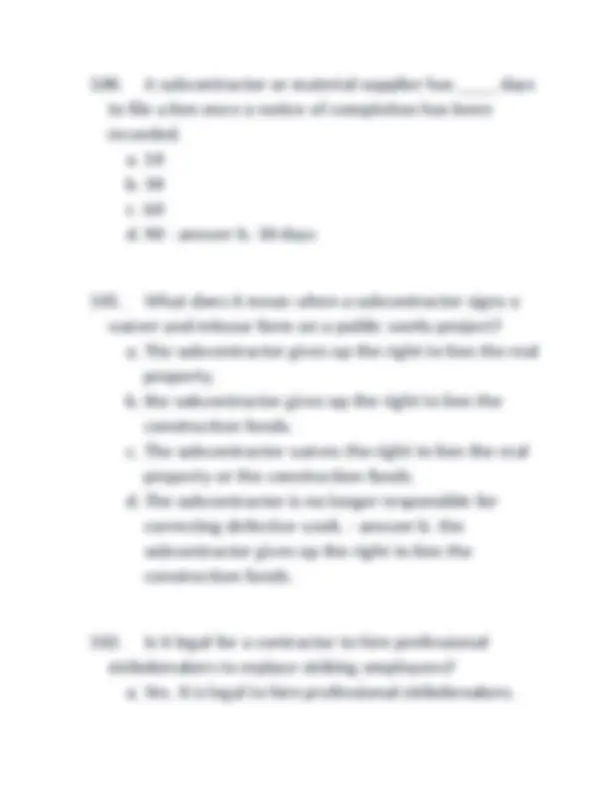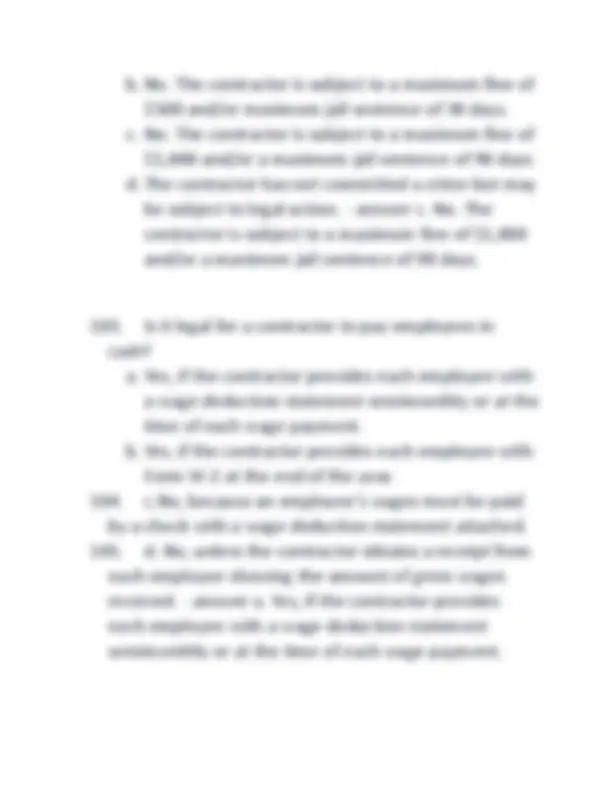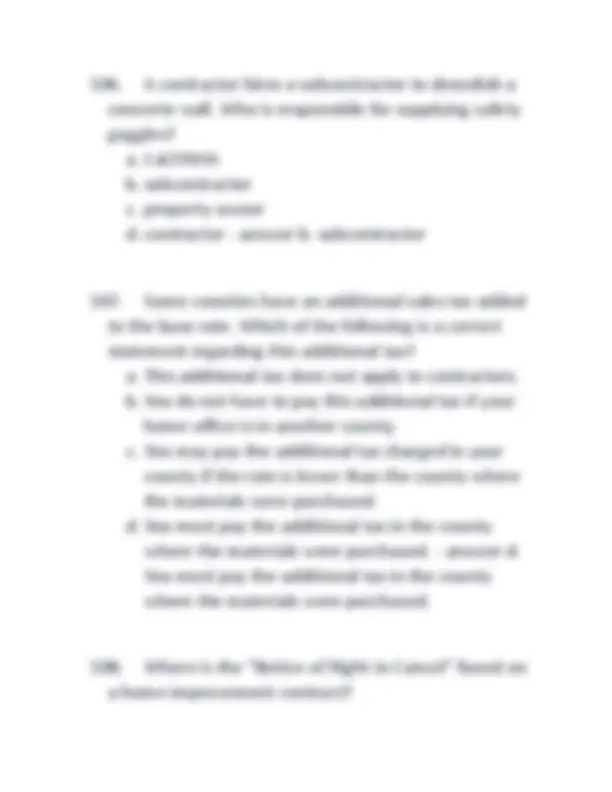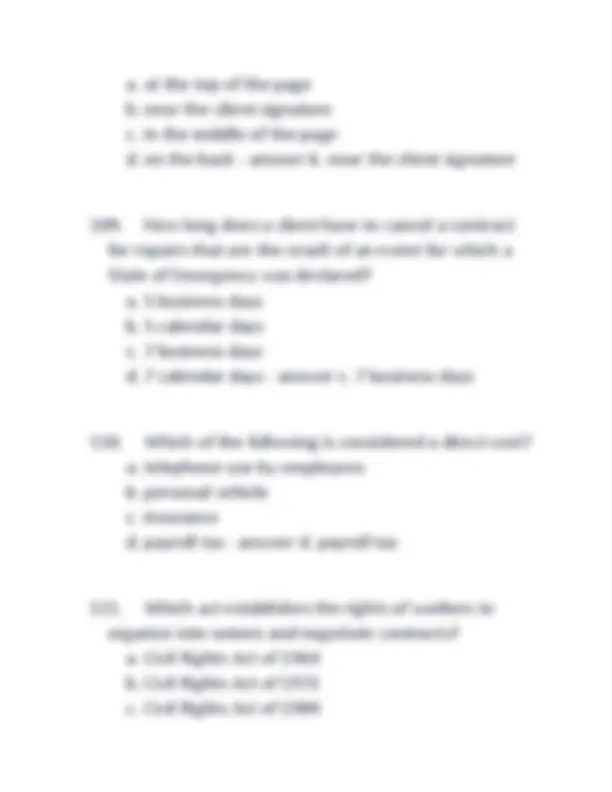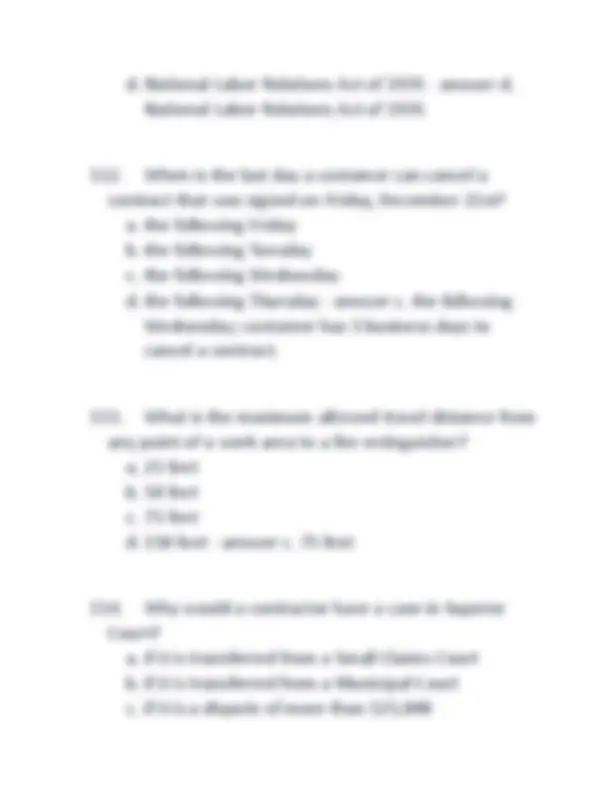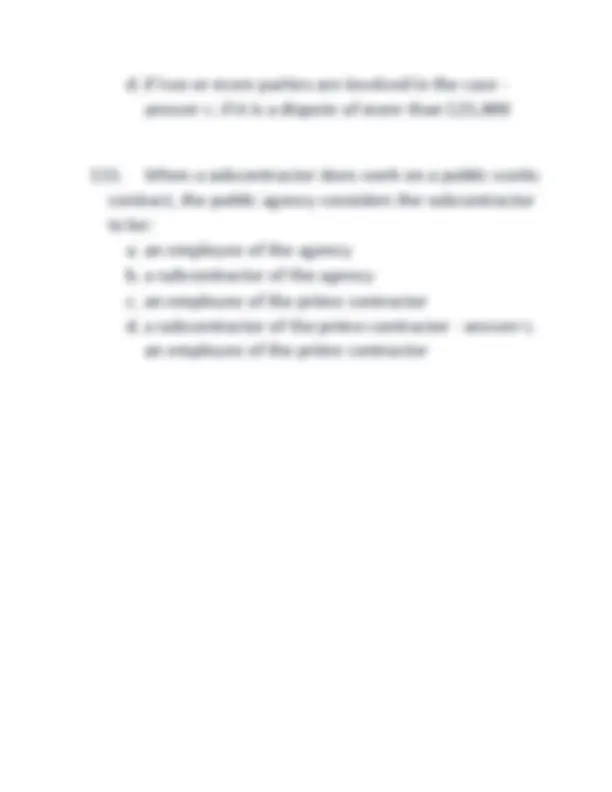Download Contractors Law Exam Questions and Answers and more Exams Engineering in PDF only on Docsity!
CONTRACTORS LAW EXAM CA LATEST EXAM 2025 QUESTIONS AND CORRECT ANSWERS GRADE A BRAND NEW
- When is an employee allowed to view their own personnel file? a. never b. when they have a court order c. whenever they wish d. during employee evaluations - answer c. when ever they wish
- As required by the immigration reform act, all employees hired on or after November 7, 1986 must complete Form ______ to verify their employment eligibility status. a. I- 9 b. W- 4 c. US- 99
- d.N- 14 - answer a. I- 9
- By law, a "hard laborer" may not be younger than _____ years old. a. 14
b. 15 c. 16 d. 17 - answer c. 16 years of age
- Ms. Gomez applies for a job. Of the following, the only reason an employer may lawfully deny her employment is: a. she is over 50 years of age b. she is Hispanic and everyone else is African- American or Caucasian. c. lifing is involved and she is a woman d. she has no work experience or Social Security number - answer d. she has no work experience or Social Security number
- A contractor has had a problem with employees stealing tools and equipment from job sites. When conducting job interviews, may the contractor ask prospective employees about their arrest records? a. It is legal to ask prospective employees about arrests not leading to convictions. b. It is not legal to ask prospective employees about arrests not leading to convictions.
to the Business and Professions Code, how much may the contractor accept from Mrs. Swenson as down payment for the work? a. The contractor may accept as much as Mrs. Swenson agrees to pay. b. The down payment is limited to $1,000 or 10% of the total price, whichever is less. c. The contractor may require enough of a down payment to cover the total cost of materials, but not labor costs. d. Nothing. The contractor must wait until the work is completed to accept any payment. - answer b. The down payment is limited to $1,000 or 10% of the total price, whichever is less.
- When should you let an attorney see a construction contract? a. Before you let your client see the contract. b. After the contract is prepared, but before you sign it. c. After the building permit is obtained. d. After the contract is signed by you and your client. - answer b. After the contract is prepared, but before you sign it.
- If a sales presentation is made in Spanish, the home solicitation contract: a. must be in Spanish b. may be in English if the writing is plain and simple c. must be co-signed by an English-speaking person if the contract is in English d. must be translated into English and notarized - answer a. must be in Spanish
- A contractor and a homeowner sign a home solicitation contract. If the owner lawfully cancels the contract, how long does the contractor have to pick up unused materials that were delivered to the owner's property? a. within 24 hours after cancellation b. within 10 days after cancellation c. within 20 days after cancellation d. It's too late. If the materials are delivered to the property before a notice of cancellation is received, the materials become the property of the owner. - answer c. within 20 days after cancellation
- After a job is completed, the owner decides to have additional work done. How should the contractor proceed? a. Write a new contract and ask the owner to sign it. b. Make an oral agreement with the owner. c. Do the additional work for free. d. Get the owner to sign a change order. - answer a. Write a new contract and ask the owner to sign it.
- You have been awarded a job. It requires two days for site preparation and one day for clean-up. The contract involves two seaparate tasks - one lasting seven days and the other 10 days. If the two tasks can be done simultaneously, for how many days do you schedule the job? a. 7 days b. 13 days c. 15 days d. 20 days. - answer b. 13 days
- For which of the following would you not obtain a short-term loan? a. wages
b. bid bond c. job materials d. office rent - answer d. office rent
- As part of the safety training process, contractors' supervisors are required to conduct "toolbox" or "tailgate" safety meetings. How often must these meetings be held? a. daily b. at least once every ten working days c. at least once a month d. at least once a quarter - answer b. at least once every ten working days
- DOSH must investigate a complaint charging a serious violation of health or safety standards within: a. one working day b. two working days c. three working days d. five calendar days - answer c. three working days
- Every employer of ______ or more full- or part- time employees must keep written health and safety records for _____ years.
employee steps onto a public road, gets hit by a car, and suffers a concussion
- When purchasing insurance, what is the best way to choose among different companies? a. referral b. cost and converage c. location of the company d. word-of-mouth - answer b. cost and coverage
- Insured employers must report every work-related illness or injury to their workers' compensation carrier within ____ of the incident. a. 24 hours b. 2 days c. 5 days d. 10 days - answer c. 5 days
- Your employee sets a cabinet wrong. The cabinet falls from the wall and damages the client's counter top. What should you do? a. Claim the damage on your general liability insurance policy.
b. Require the employee to pay for the damage to the counter top. c. Tell the client to claim the damaged counter top on his or her homeowner's insurance policy. d. No action is required. The client must assume the risk of damage. - answer a. Claim the damage on your general liability insurance policy.
- A contractor is looking for an insurance policy to cover a high degree of exposure to risk. Of the following, which policy would be best for this purpose? a. property b. general liability c. builder's risk d. umbrella - answer d. umbrella
- John Meyers, a general contractor, had a contract with Mr. and Mrs. Barnes to construct a gazebo and deck in their back yard. John was behind schedule and hired his 18-year-old son, Bart, to help on a part-time basis. After working on the project for a month, Bart slipped on a plank that John had laid across the deck but did not nail securely. As a result of the fall, Bart broke his leg. John is insured for workers'
coverage. Which of the following statements best describes the situation, except in cased of fraud? a. The subcontractor is guilty, but the prime contactor is not responsible. b. The prime contractor is guilty, but the subcontractor is not responsible. c. Neither the prime contractor nor the subcontractor are responsible. d. The subcontractor is guilty, but the prime contractor must take responsibility for the injuries.
- answer d. The subcontractor is guilty, but the prime contractor must take responsibility for the injuries.
- Your accountant advises you to set up a cost management system. What does this system do? a. It gives a cost history to analyze labor and material costs. b. It shows where profits and losses are. c. It shows costs of materials only. d. It compares what others are charging for subcontracted work. - answer a. It gives a cost history to analyze labor and material costs.
- An employee workd 60 hours in one week. If the hourly wage rate is $12, what are the gross wages? a. $ b. $ c. $ d. $1,080 - answer b. $
- Gross wages = Regular Time + Overtime
- Regular Time = 40 hrs x $12/hr = $
- Overtime = 20 hrs x 1.5 x $12/hr = $
- Gross Wages = $480 + $360 = $
- A(n) _____ represents a company's financial position on a specified date. a. balance sheet b. income statement c. cash flow statement d. profit plan - answer a. balance sheet
- A(n) _____ summarizes revenues, costs of sales, and operating expenses over a period of time. a. profit plan b. balance sheet c. cash flow statement d. income statement - answer d. income statement
- An employer remits State income tax and State disability taxes withheld from an employee's wages to what agency? a. Internal Revenue Service b. Employment Development Department c. Franchise Tax Board d. Board of Equalization - answer b. Employment Development Department
- Who pays FICA? a. employer b. employee c. 50% employer and 50% employee d. 90% employer and 10% employee - answer c. 50% employer and 50% employee
- How often are FICA taxes reported and paid? a. weekly b. monthly c. quarterly d. yearly - answer c. quarterly
- Who pays FUTA? a. employer
b. employee c. 50% employer and 50% employee d. 90% employer and 10% employee - answer a. employer
- What happens after an employee's taxable wages exceed $7,000? a. After $7,000, the FUTA rate increases. b. After $7,000, the FUTA rate decreases by 50%. c. After $7,000, the employer does not pay FUTA. d. Nothing. FUTA is not subject to a wage limit. - answer c. After $7,000, the employer does not pay FUTA.
- Which of the following may not be deducted from an employee's paycheck? a. SDI b. FICA c. Medicare tax d. workers' compensation insurance premiums - answer d. workers' compensation insurance premiums
- To whom do you report and pay sales tax?
- What kind of discount do lumber yards and other suppliers offer to contractors who pay their bills promptly? a. 1/2% - 1% b. 1% - 2% c. 4% - 8 % d. 10% - 12% - answer b. 1% - 2%
- If a newly hired employee does not have an SSN, what should be done? a. The employee must apply for an SSN. b. The employer must apply on behalf of the employee for an SSN. c. If a W-2 is provided, an SSN is not needed. d. Call the police. - answer a. The employee must apply for an SSN.
- Once a budget is finalized, the: a. contractor should stick to the budget no matter what happens b. contractor should do the best possible job of staying within the budget c. budget should be revised each month
d. budget should be referred to only if the business has cash flow problems - answer b. contractor should do the best possible job of staying within the budget
- Which of the following procedures BEST ensures error-free bids? a. working with an attorney b. having another person draft the bid c. discussing details of the bid with the supplier d. rechecking the bid before submitting it to the client - answer d. rechecking the bid before submitting it to the client
- Direct costs are $37,000, overhead is 12%, and profit is 5%. What is the selling price? a. $39,272. b. $41,373. c. $43,383. d. $44,578.31 - answer d. Sum of overhead and profit percentages = 12% + 5% = 17%
- Percent of selling price that is direct costs = 100% - 17% = 83% =.
- Selling price = $37,000 / .83 = $44,578.

